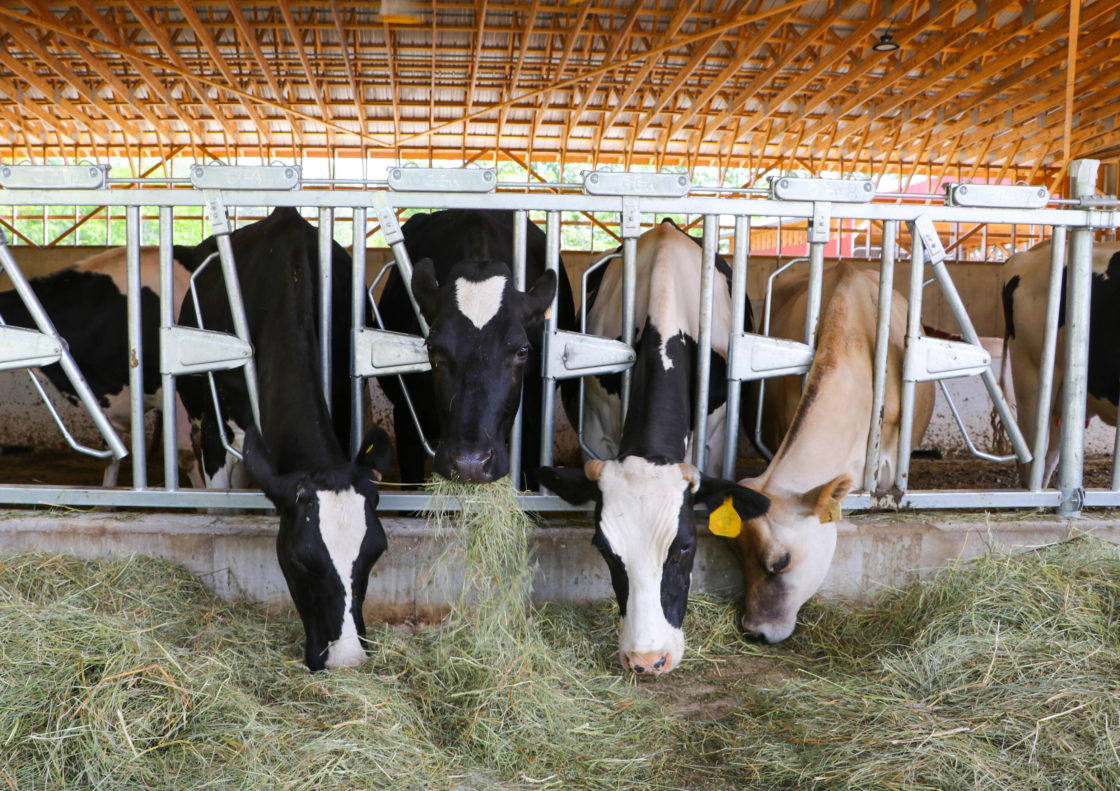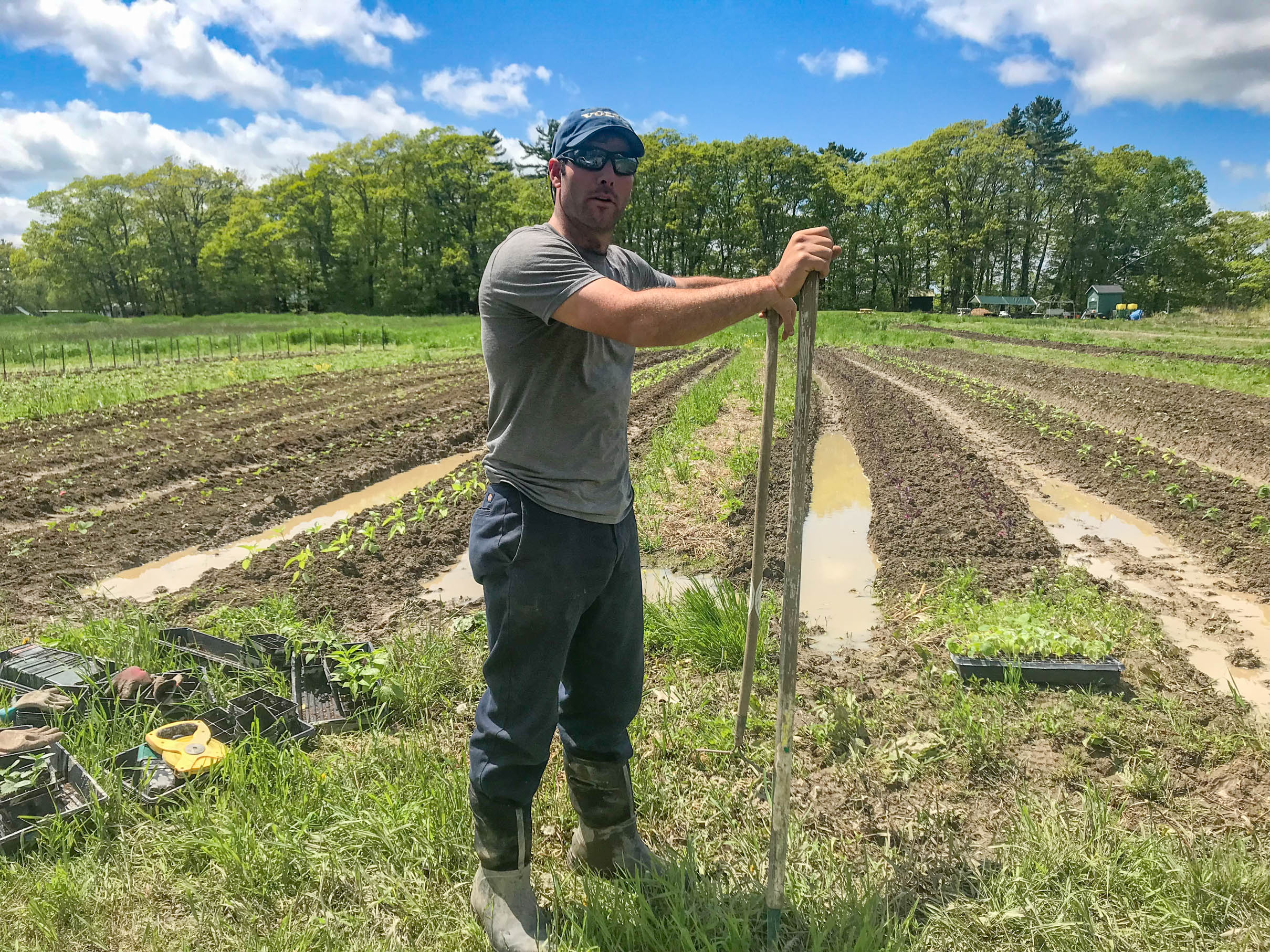Here’s to a Dry July: How rain and more rain slowed our growing season
A rainy spring kept us anxiously awaiting warm summer days, but the farmers had their eyes to the forecast, sky, and fields for much more significant reasons. For them, the wetter-than-usual conditions delayed their seasonal growing, haying, and grazing cycles. This delay has a spiral effect on production and more, and was a frustration that reverberated among farms all across the state. At each farm, it has a different effect depending on minor factors like slope of the land, soil type, farm methods, and more. Read on to see how the wet conditions played a role in getting our summer season started and how our farmers had to adapt to the elements.

Dairy Farming
This exceptionally wet spring has caused a lot of problems for our farming operation. We still have no hay cut and the grass is way ahead of us, meaning it is much more mature than the kind of forage we need for optimal milk production and animal performance. We are over two months behind when we normally take our first crop of hay, which is the second week of May. This time last year we were wrapping second crop haylage.
Our soils are coastal silt loam, meaning they are a heavy soil with very little sand and are not well-drained. Our soils hold water well during drought but are easily saturated and damaged with excessive rainfall. We are also concerned with nutrient leaching and grass recovery times this spring.
With our intensively managed grazing system, our cows walk to and from a new paddock each morning and night. We have always managed to get by without developed “cow lanes” (narrow gravel roads that keep the cows from mucking up their walking paths) but this year is proving incredibly challenging. We are shifting the walking paths side to side as much as possible but not having great success. Cows can get sore feet and dirty udders walking through a lot of mud twice a day, so we have been keeping cows in our wonderful, comfortable new barn on very wet days. Unfortunately, since we have not been able to put up any hay yet, we are having to feed them purchased dry hay from another organic farm that has been able to put up feed because they are on better-draining soils.
The cows are grazing grass that is much more mature than usual for this time of year. Vegetative, highly digestible grass does wonders for milk production and components, but bolted, headed-out mature grasses are not very digestible and have little protein or energy. This causes milk production to drop very low. We are doing the best we can to keep the cows comfortable and healthy, but they sure aren’t making much milk, and when you add purchased feed and more pounds per head of grain, the cost of producing milk gets higher, and we already operate on very thin margins.
All we can do is the best we can, and we appreciate all your thoughts and encouragement. Think sun!

Fruit & Vegetable Farming
This historically wet spring has had dramatic effects on fruit and vegetable operations at Wolfe’s Neck this season. While our marine clay soils are fertile, they have poor drainage and retain moisture for long periods of time. The three fields in which fruits and vegetables are produced are soggy to say the least, with standing water having taken up residence since mid-April.
All of the thoughtful crop planning conducted in the off season went out the window at the start of June, as portions of the field that were expected to be dry in May for planting have still not been accessible. Water has repeatedly flooded one of the high tunnel greenhouses after heavy rains and must be diverted with makeshift trenches dug out with shovels.
The fruit and vegetable team was forced to work too-wet soil with a tractor and rototiller in order to get seedling transplants in the ground as they outgrew their seed trays in the propagation house. Some garlic planted last fall simply rotted in the field. Many seeds are failing to germinate due to excessive moisture in the field, leading to inconsistent crops at best. Crops like peas, garlic scapes, summer squash, zucchini, and strawberries are at least a month behind schedule, making for a creative challenge in pulling together solid CSA shares for our members. Even now in early July, large sections of the fruit and vegetable fields that grew flowers and potatoes last year are still inaccessible.
On the bright side, the fruit and vegetable crew has saved a lot of time worrying about irrigation. Despite adverse and muddy conditions, they are pushing through with smiles and considering this a learning experience. Here’s to a dry July!
← Back to Blog